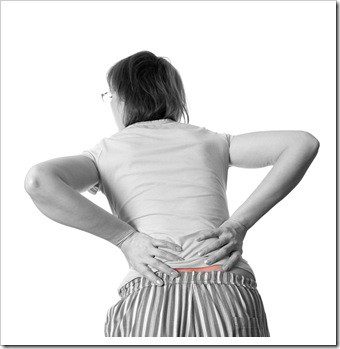
In the past, a patient presenting to a doctor with rheumatoid arthritis would not be told to “take a hike”. First of all, that would have sounded rude, but as a genuine piece of advice it just didn’t figure in a doctor’s thoughts. Arthritis was looked on as a natural and unavoidable part of getting old, and was taken as a message that the patient had to ease back on their daily activities or risk aggravating the condition.
Not any more. Current research and clinical results tell us that an arthritis sufferer does not have to spend their remaining years popping pills and lying in bed.
What Is Rheumatoid Arthritis?
The word “arthritis” translates as “joint inflammation” and it is often used to describe an assortment of rheumatic diseases, of which there are more than 100 conditions. These include the commonly-known gout, osteoarthritis, fibromyalgia, and psoriatic arthritis. Rheumatoid arthritis is also classified as a rheumatic disease and affects 2.1 million people in the United States, equating to around 1% of the population. Usually considered a disease of middle to old age, rheumatoid arthritis can also manifest in a person’s younger years.
The physical effects of rheumatoid arthritis include pain, swelling, stiffness, and a loss of function in the joints. It differs from other forms of arthritis by having the following characteristics:
- Joints that are tender, warm, and swollen.
- Fatigue, sometimes with a fever, and a general feeling of malaise.
- Pain and stiffness that lasts more than half an hour following a long rest.
- A symmetrical pattern of affected areas. Where one hand is affected, so is the other.
- Most frequently affected are the wrist and finger joints closest to the hand, although it can also take its toll on the joints of the neck, shoulder, elbow, hip, knee, ankle, and foot.
- The disease can persist for many years and may have systemic effects; that is, affect more than the joints.
Individuals can never know exactly what to expect with rheumatoid arthritis. It hits people in different ways. Some may suffer mildly for a few months then become symptom-free. Then again, symptoms of mild arthritis may last for years, with periodic flare-ups alternating with periods of remission. Cases of severe arthritis, on the other hand, tend to produce a chronic pain that does not retreat and ends up causing serious joint damage and disability.
What About Exercise?
Nowadays, regular exercise is seen as a crucial part of arthritis management because it helps to maintain muscle tone, joint mobility, overall flexibility, cardiovascular endurance, and weight control. However, there must be a balance between exercise and rest, because rest is also necessary to reduce joint inflammation, pain, and fatigue. How this is handled should be dictated by a person’s individual circumstances. During the active phase of arthritis, it is advisable to take more rest, while more exercise would be the prescription during periods of remission. When dealing with acute flare-ups affecting the whole system or acute local joint flares, the advice is that patients gently put their joints through a full range of motion once a day, interspersed with periods of rest. A healthcare professional will be able to advise on exactly what proportion of exercise/rest is best for the individual.
These are the exercises most commonly recommended for arthritis sufferers:
|
Patients should talk to their healthcare provider if they experience any of the following:
- Fatigue that is unusually persistent or severe
- Increased weakness
- Restricted range of motion, beyond that normally suffered
- Increase in joint swelling
- Pain following exercise that persists for more than an hour
For an arthritis sufferer, the doctor of chiropractic will help create and hone their exercise programs to gain optimum results while minimizing any discomfort. Crucially, chiropractors can identify those exercises that are to be considered off-limits, according to the specific circumstances of the patient.
Nutrition for the Rheumatoid Arthritis Patient
The drug regimen for arthritis patients is aimed at suppressing the immune system and therefore slowing the progression of the disease, but an important complimentary approach lies in sticking to correct sources of nutrition. This can help to alleviate inflammation and retard the disease.
Some of the foods and nutritional supplements identified as useful for managing arthritis are:
- Fatty-acid supplements: eicosapentaenoic acid (EPA), docosahexaenoic acid (DHA), and gamma linolenic acid (GLA). Some studies have shown that these supplements have efficacy in helping reduce pain and inflammation, thus lessening a patient’s dependence on corticosteroids. Deep-sea fish, such as salmon, tuna, herring and halibut are good sources of EPA and DHA. GLA is harder to find in food sources, as oppose to supplement form, but is present in foods such as black currants and borage seeds.
- The spice turmeric may also be helpful, and it has been shown that a 95% curcuminoid extract can significantly reduce inflammation and joint pain.
- Studies have also shown that ginger extract, nettle leaf extract, a vegetarian diet and a low-allergen diet can all help to reduce the pain and inflammation of rheumatoid arthritis.
Having said that, the benefits and risks of these agents and others are still being researched, therefore you should always consult with a healthcare professional before embarking on any change in diet or supplementation program. This is especially the case if you are taking doctor-prescribed medications for your condition.
How Can Your Doctor of Chiropractic Help?
Your doctor of chiropractic can help you plan an exercise program tailored to your individual circumstances, with the aim of:
- Helping restore to your joints any lost range of motion.
- Improving your flexibility and overall physical endurance.
- Increasing both your muscle tone and strength.
Chiropractors can also offer advice on optimizing your nutritional intake and on which supplements may be beneficial, all designed to reduce and control your joint pain and inflammation.
For Your Health,
Dr. Joshua Salina
